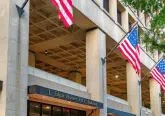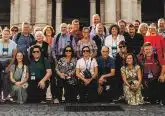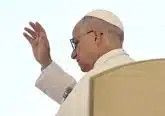On the Implementation in the Archdiocese of Cincinnati of the motu proprio of the Holy Father, Pope Francis TRADITIONIS CUSTODES
I. Celebrations of Mass in Designated Locations
a. According to Traditionis Custodes Art. 3, §2, Masses according to the Missal of 1962 may be celebrated for groups of the faithful who have a particular devotion to this form of the Mass, and directs the diocesan bishop to designate one or more non-parochial locations to satisfy
this pastoral need.
b. In this instance, and until further notice, the definition of ‘non-parochial’ will be interpreted as a sacred space that is an oratory, shrine, or other suitable location deemed particularly adept to fulfill the care of the faithful as outlined by the motu proprio
c. Subsequently, the Archbishop designates the following sites to serve as locations for the celebration of Masses according to the Missal of 1962.
i. In the Cincinnati area:
§ Old St. Mary’s Church (Over-the-Rhine)
§ Sacred Heart Church (Camp Washington)
ii. In the Dayton area:
§ Holy Family Church (Dayton)
iii. In the Northern area:
§ TBD [upon identification and confirmation of location, updated norms specifying this
location will be issued]
d. Priests assigned to these designated locations – as well as other priests who have the requisite faculty (see Section II.b below) along with the permission of the pastor, rector, or chaplain of the respective place – may celebrate Mass ad libitum according to the Missal of 1962 at these locations for the satisfaction of the needs of the faithful.
e. These Masses will follow the prescriptions of the motu proprio related to the scriptural readings.
i. Art. 3, §3 states that “in these celebrations the readings are proclaimed in the vernacular, using translations of the Sacred Scripture approved for liturgical use by the respective Episcopal Conferences.”
ii. This norm can be applied in one of two ways:
§ The readings may be read or sung in Latin, in the normal manner as specified by the Ritus servandus and the Ordo Missae, with the vernacular readings proclaimed at the ambo following the Latin Gospel;
§ Alternatively, in a Low Mass the vernacular readings may replace the Latin and proclaimed at the normal locations for the readings as indicated in the Ritus servandus and Ordo Missae.
iii. In lieu of an approved edition of the vernacular readings for the Missal of 1962 for the Dioceses of the United States of America, priests who celebrate these Masses may utilize the vernacular translations found in any hand-Missal published with ecclesiastical approval until further notice.
II. Celebrations of Mass in Non-Designated Locations
a. Outside of the afore-mentioned designated locations, qualified priests (see below) may celebrate non-scheduled and non-publicized Masses in a sacred place, or at least a decent place, with the Archbishop’s permission. These Masses may admit a minister to make the necessary responses and otherwise assist the celebrant during Mass. It is not presumed that the norms of Art. 3, §3, pertaining to the vernacular readings, apply to celebrations outside of the designated locations.
b. According to Art. 5, “Priests who already celebrate according to the Missale Romanum of 1962 should request from the diocesan Bishop the authorization to continue to enjoy this faculty.” SUBSEQUENTLY:
i. ANY PRIEST ORDAINED PRIOR TO THE PROMULGATION OF THE MOTU PROPRIO WHO IS ALREADY CONSIDERED QUALIFIED (‘IDONEUS’) is to request the faculty from the
Archbishop of Cincinnati through his delegate (see Section IV.b below).
ii. ANY PRIEST ORDAINED PRIOR TO THE PROMULGATION OF THE MOTU PROPRIO, BUT NOT YET QUALIFIED (‘IDONEUS’) is to contact the Archbishop’s delegate to schedule an evaluation of the rubrics and rite of the Missal of 1962 so as to receive this faculty.
c. According to Art. 4, “Priests ordained after the publication of the present Motu Proprio, who wish to celebrate using the Missale Romanum of 1962, should submit a formal request to the diocesan Bishop who shall consult the Apostolic See before granting this authorization.”
i. It will be presumed that such priests will have received some form of training in the rubrics and rite of the Missal of 1962 prior to making this request.
ii. After doing so, the priest is to contact the Archbishop’s delegate to confirm this training as well as to make his formal request for the faculty.
III. Other Non-Eucharistic, Sacramental Celebrations
a. According to Art. 8, “Previous norms, instructions, permissions, and customs that do not conform to the provisions of the present Motu Proprio are abrogated.”
b. Subsequently, the current legislation does not make provision for the use of other liturgical books in force in 1962, including the Rituale Romanum of 1952 for the celebration of the Sacramental rites of the Church.
c. Should particular pastoral need arise related to the celebration of these rites according to the Rituale Romanum of 1952, such concerns should be directed to the Archbishop’s delegate.
IV. The Delegate for the Application of the Traditionis Custodes
a. According to Art. 3, §4, the diocesan bishop is to appoint a priest to serve as his delegate in the application of the motu proprio.
b. In the Archdiocese of Cincinnati, the delegate appointed for this purpose is Father Ryan Ruiz, S.L.D., Dean of the School of Theology, Mount St. Mary’s Seminary and School of Theology;
Assistant Professor of Liturgy and Sacraments.













